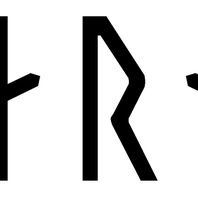
Viking Names
Barni
An Old Norse male name Barni is not certainly found in Scandinavia, although it may be attested in some Danish place-names. An alternative explanation is that Barni is an Anglo-Scandinavian variant of the very common male name Bjarni. The name forms the first element of two places in Nottinghamshire called Barnby.
Read More
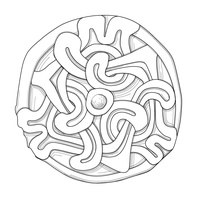
Viking Designs
Drawing of Copper Alloy Disc Brooch
Drawing of a copper alloy, gilded brooch with a zoomorphic design. Brooches were a typical part of female dress. Scandinavian brooches came in a variety of sizes and shapes which included disc, trefoil, lozenge, equal-armed, and oval shapes. The different brooch types served a variety of functions in Scandinavian female dress with oval brooches typically being used as shoulder clasps for apron-type dresses and the rest being used to secure an outer garment to an inner shift. Anglo-Saxon brooches do not match this diversity of form with large disc brooches being typical of ninth century dress styles with smaller ones becoming more popular in the later ninth and tenth centuries. However, since disc brooches were used by both Anglo-Saxon and Scandinavian women they are distinguished by their morphology. Scandinavian brooches were typically domed with a hollow back while Anglo-Saxon brooches were usually flat. Moreover, Anglo-Saxon brooches were worn singly without accompanying accessories.
Read More

Viking Names
Toki
Tóki is either a short form of names in Þórkell or possibly a pet-form of name in Þór- ‘the god’s name Þórr’ with the addition of the suffix -ki. The name is very common in Denmark where it is found in many place-names. It possibly spread to Norway and Sweden from Denmark. It is fairly common in Sweden in the forms Toke and Tuke and in Norway from the eleventh century onwards, but it is very rare in Iceland. In Normandy it is probably found as the surname Tocque and occurs in a number of place-names there. The personal name is also the first element in Tugby, Leicestershire.
Read More
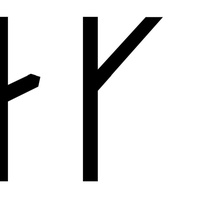
Viking Names
Aki
Áki is probably a diminutive of *ani, an unrecorded word related to Old Norse ái ‘great-grandfather’. The name is frequent in Denmark both independently and in place-names and likely originated in the Danish islands. It is also frequent in Sweden, but does not appear in Norway until about 1300. It is found in one Normandy place-name. The name is well-attested in Lincolnshire and Yorkshire, although some forms may represent the Old English male personal name Acca. Áki is also the first element in the place-name Oakthorpe, Leicestershire
Read More
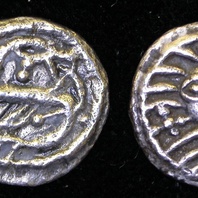
Viking Objects
Continental Sceat (LEIC-901FF1)
This silver Continental sceat is possibly part of Seaby 843 Series X which are considered to be associated with the early trading center at Ribe. It is very likely that they made their way to England by means of Vikings.
Read More
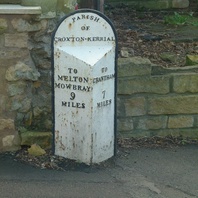
Viking Names
Croxton Kerrial
The first element of Croxton Kerrial, in the Framland Hundred of Leicestershire, likely comes from the Old Danish male personal name Krōk (Old Norse Krókr), originally a byname meaning ‘crooked-back’, possibly ‘crooked-dealer’ related to Old Norse krókr ‘hook’. Alternatively the first element could be Old English crōc ‘a crook’, which relates to a location situated in a nook or bend of land. The second element is Old English tun ‘an enclosure; a farmstead; a village; an estate’. The land was granted to granted to Bertramus de Cryoll in 1239 thus the affix Kerrial. This name can be compared to South Croxton also in Leicestershire.
Read More
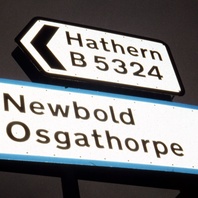
Viking Names
Osgathorpe
Osgathorpe, in the West Goscote Hundred of Leicestershire, comes from the Old Danish male personal name Asgot (Old Norse Ásgautr) and the Old Norse element þorp ‘outlying farm, settlement’. Some later forms of the name show replacement by the Norman male personal name Angod. In the neighbouring Thringstone in Coalville parish, the field-names Ossegodishaug and Hosgothawe (with Old English haga or Old Norse hagi ‘enclosure’) presumably record the same owner of land.
Read More
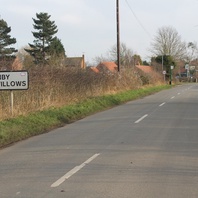
Viking Names
Barnby in the Willows
Barnby in the Willows, in the Newark Wapentake of Nottinghamshire, most likely comes from the Old Norse elements barn ‘child’ and by ‘farm, settlement’. Its meaning, ‘farmstead of the children’, may indicate joint inheritance by the offspring. Alternatively, the first element of the name could come from the Old Danish male personal name Barni. The affix is added at a later date and means ‘among the willow-trees’ and could be connected to its low location by the river Witham. The place-name has the same etymology as Barnby Moor, in the Bassetlaw Wapentake of Nottinghamshire.
Read More
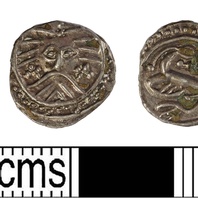
Viking Objects
Danish Silver Sceat (LIN-6C0EBC)
This silver sceat is classified as part of the Danish Woden/Monster Series X which date to around 710 – 800. The obverse depicts the head of Woden with crosses to either side of rounded beard and pellet above. The reverse depicts a monster facing left. These coins are considered to be associated with the early trading center at Ribe. It is very likely that they made their way to England by means of Vikings.
Read More

Viking Names
Grainsby
The first element of Grainsby, in the Haverstoe Wapentake of Lincolnshire, is of uncertain origin. It is likely the Old Norse male byname Grein, Old East Scandinavian Gren, from Old Norse grein, Old Danish gren ‘a branch’. Alternatively the element could be the Old Norse appellative grein ‘a branch (of a tree); a fork (of a river)’. This word survives in dialect as ‘a small valley forking off from another’, but there is nothing in the topography of Grainsby that supports this sense. The second element is Old Norse by ‘a farmstead, a village’.
Read More
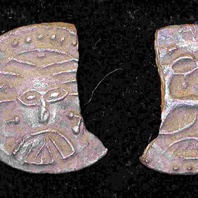
Viking Objects
Danish Silver Sceat (LEIC-5608D1)
This silver sceat is classified as part of the Danish Series X Type 31. The obverse depicts the head of Woden with crosses to either side of a rounded beard and pellet above. The reverse depicts a monster facing left. These coins are considered to be associated with the early trading center at Ribe in Denmark. It is very likely that they made their way to England by means of Vikings.
